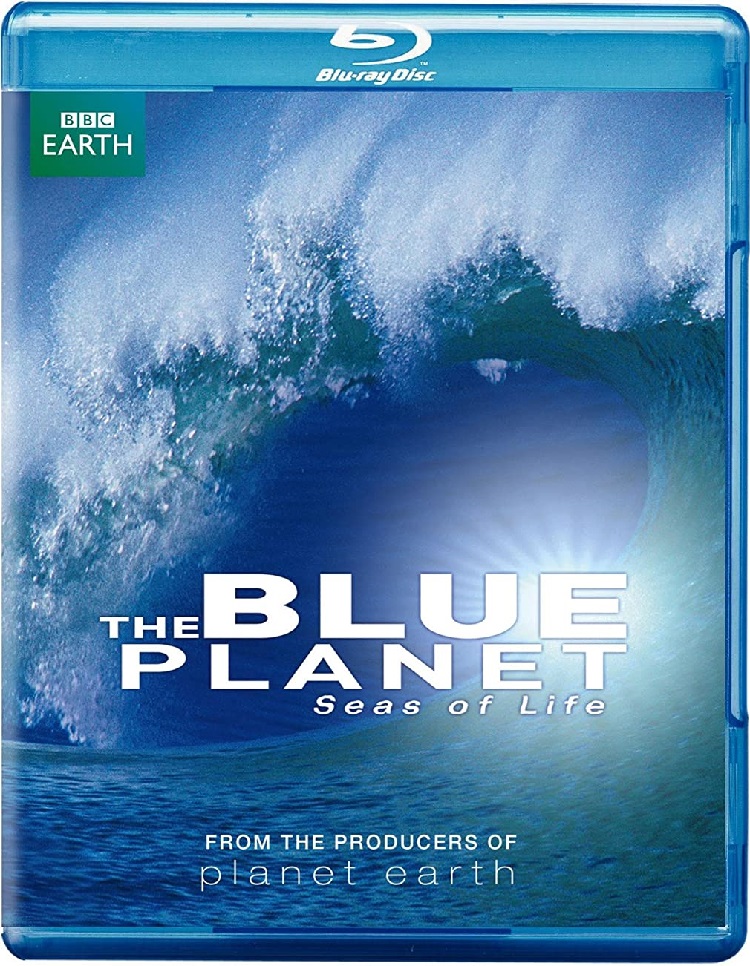
In 2001, the BBC took on the daunting task of doing a comprehensive documentary on one of the least-explored regions of the Earth — its oceans. Narrated by David Attenborough and five years in the making, the documentary, known as The Blue Planet, covered each aspect of the world’s oceans in a series of eight 50-minute episodes. The show was an astounding success, capturing images of seldom (and sometimes never) seen sea life in its natural habitat. Its breathtaking images did not go unnoticed, as The Blue Planet won an Emmy Award for Best Cinematography — Non-Fiction. Likewise, George Fenton’s dramatic score won the Emmy in that category. The series is nothing short of a triumph for nature photography, with fans long clamoring for a Blu-ray release. Their wish was finally granted with the release of The Blue Planet: Seas Of Life.
Each episode of the documentary is themed, with the first one being “Ocean World.” In it, we learn that ocean currents control the distribution of nutrients and life in the sea. The currents combine with island flanks to raise nutrients toward the surface. This episode introduces the idea of the oceanic food chain, a theme throughout the documentary. Many fish feed on plankton — tiny organisms that flourish in the ocean. Larger fish, such as tuna, feed on the plankton feeders and still larger fish, such as silky and hammerhead sharks, feed on the tuna. Sometimes the largest inhabitants feed on the smallest, such as when the blue whale, which can grow to 30 meters and weigh 200 tons with a heart the size of a car, feeds on krill. The BBC’s cameras managed to capture spectacular aerial footage of the majestic blue whales.
“Frozen Seas” discusses the waters of the Arctic and Antarctica. In the Arctic, winter temperatures rarely rise about -50° centigrade, save for one key area. Polynyas are formed when water currents are so strong that ice cannot form. This may seem an uninhabitable area, yet the walrus and bowhead whales make their homes here. Sometimes animals can get trapped in the ice, as shown in an incident where a group of beluga whales’ movement is restricted to an opening in the ice. This makes them much easier targets for predators, at least until the summer when the ice melts. Some animals, such as seals, hide their young in the ice to protect them from polar bears. As extreme as the conditions are in the Arctic, they are worse in Antarctica, the coldest/windiest place in the world. In spite of this, some animals, such as Emperor Penguins still make their homes here. There they work as a team to avoid capture by leopard seals.
Perhaps the most interesting of the episodes though is “The Deep.” As the name suggests, this episode covers the farthest reaches of the ocean, 60 percent of which is more than one mile deep. Here we learn that many animals become transparent to avoid detection and that sperm whales forage for food up to 1,000 meters down. Many sea creatures are shown for the first time, including the Dumbo octopus, known for its large fins that look like ears and the hairy anglerfish. Looking as if they came from a science fiction movie, some of these strange creatures truly have to be seen to be believed.
Other episodes focus on the open oceans and its inhabitants, coral reefs and the effects of the changing seasons and lunar cycles on the world’s oceans. Attenborough’s narration is the only human voice heard throughout, as the series prefers to let the animals do the talking. For his part, Attenborough plays the role of curious onlooker, merely telling the viewer what is going on and letting he or she draw their own conclusions. Many of the images shown are powerful enough that they don’t require much narration, and Attenborough stays out of nature’s way whenever possible. The amount of incredible visuals presented throughout is truly staggering.
It should be noted that even this version is not a true HD representation of the source material, however. The packaging states, “The main feature has been upconverted from standard definition source material.” In addition, some of the special features are not in high definition either. Indeed some compression artifacts are sometimes noticeable. However, the vast majority of the original program was shot on film and the upconversion of those portions looks fantastic. It is also, apparently, a fairly significant upgrade over the original DVD release. The audio is presented in DTS-HD 5.1 and is rich and powerful, making for a very realistic presentation.
Each of the three discs contains a host of extra features. The first two feature behind-the-scenes footage for each episode, with interviews with the key players demonstrating how they achieved this incredible footage. The third disc includes interviews with series producer Alastair Fothergill, cameraman Doug Allan and researcher Penny Allen. In addition, it contains five programs with nearly four hours of bonus content, including “Amazon Abyss” and “Dive To Shark Volcano.”
In spite of more than 70 percent of the Earth being covered in water, we have barely scratched the surface in terms of exploring these vast oceans. With The Blue Planet: Seas Of Life, the BBC attempts to rectify that, taking viewers on a journey that few would ever make otherwise. The results are wonderful and definitely worth checking out for anyone with even a passing interest in aquatic life.